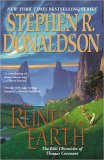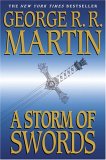Summary | Excerpt | Reviews | Read-Alikes | Genres & Themes | Author Bio

There are tales of Middle-earth from times long before The Lord of the Rings, and the story told in this book is set in the great country that lay beyond the Grey Havens in the West: lands where Treebeard once walked, but that were drowned in the great cataclysm that ended the First Age of the World.
“There are tales of Middle-earth from times long before The Lord of the Rings, and the story told in this book is set in the great country that lay beyond the Grey Havens in the West: lands where Treebeard once walked, but that were drowned in the great cataclysm that ended the First Age of the World.
“In that remote time Morgoth, the first Dark Lord, dwelt in the vast fortress of Angband, the Hells of Iron, in the North; and the tragedy of Túrin and his sister Niënor unfolded within the shadow of the fear of Angband and the war waged by Morgoth against the lands and secret cities of the Elves.
“Their brief and passionate lives were dominated by the elemental hatred that Morgoth bore them as the children of Húrin, the man who had dared to defy and to scorn him to his face. Against them he sent his most formidable servant, Glaurung, a powerful spirit in the form of a huge wingless dragon of fire. Into this story of brutal conquest and flight, of forest hiding-places and pursuit, of resistance with lessening hope, the Dark Lord and the Dragon enter in direly articulate form. Sardonic and mocking, Glaurung manipulated the fates of Túrin and Niënor by lies of diabolic cunning and guile, and the curse of Morgoth was fulfilled.
“The earliest versions of this story by J.R.R. Tolkien go back to the end of the First World War and the years that followed; but long afterward, when The Lord of the Rings was finished, he wrote it anew and greatly enlarged it in complexities of motive and character: it became the dominant story in his later work on Middle-earth. But he could not bring it to a final and finished form. In this book I have endeavored to construct, after long study of the manuscripts, a coherent narrative without any editorial invention.” — Christopher Tolkien

If you liked The Children of Húrin, try these:

by Stephen R. Donaldson
Published 2005
The triumphant return of the Thomas Covenant fantasy series, with the first in a new trilogy: The Last Chronicles of Thomas Covenant.

by George R R. Martin
Published 2002
The brutal struggle for power nears its tumultuous climax, the battered and divided kingdom faces its most terrifying invasion--one that is being spearheaded from beyond the grave
A few books well chosen, and well made use of, will be more profitable than a great confused Alexandrian library.
Click Here to find out who said this, as well as discovering other famous literary quotes!